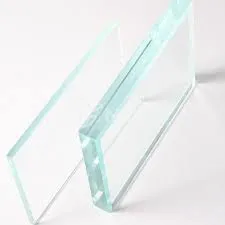Different Types of Architectural Glass A Comprehensive Overview
Architectural glass plays a vital role in modern construction, not only for functional purposes but also for aesthetic appeal. As buildings grow more ambitious in design, the demand for specialized glass varieties increases. This article explores the different types of architectural glass, their properties, and their applications in contemporary architecture.
1. Float Glass
Float glass is the most common type of glass used in buildings. It is made by floating molten glass on top of molten tin, which creates a smooth, uniform surface. This type of glass is available in various thicknesses and can be easily cut into desired shapes and sizes. Float glass is often used for windows and glass façades due to its clarity and affordability.
2. Laminated Glass
Laminated glass consists of two or more sheets of glass bonded together with an interlayer, usually made of polyvinyl butyral (PVB). This type of glass enhances safety and security; if broken, it holds the shards together, reducing the risk of injury. Laminated glass also provides sound insulation and UV protection, making it suitable for use in commercial buildings, skylights, and glass floors.
3. Tempered Glass
Tempered glass, or toughened glass, undergoes a special heat treatment process that increases its strength compared to standard glass. This process makes it resistant to impact and thermal stresses. When broken, tempered glass shatters into small, blunt pieces rather than sharp shards, making it safer for use in high-traffic areas like office buildings, storefronts, and shower enclosures.
4. Insulated Glass
different types of architectural glass
Insulated glass units (IGUs) consist of two or more glass panes separated by a space filled with argon or krypton gas, which provides enhanced thermal insulation. This type of glass is crucial in energy-efficient buildings, as it helps to minimize heat loss and reduce energy costs. Insulated glass is commonly used in residential and commercial windows.
5. Low-E Glass
Low-emissivity (Low-E) glass features a special coating that reflects infrared light while allowing visible light to pass through. This coating helps maintain indoor temperatures, making buildings more energy-efficient. Low-E Glass is particularly popular in climates with extreme temperatures as it reduces the need for heating or cooling, thus lowering energy consumption.
6. Fritted Glass
Fritted glass is coated with ceramic paint that is baked onto the surface during manufacturing. This coating can be used for aesthetic purposes, adding a decorative touch to buildings, or for functional reasons, such as enhancing solar control and glare reduction. Fritted glass is commonly used in building façades and can contribute to the overall sustainability of a structure.
7. Mirrored Glass
Mirrored glass features a reflective coating that gives it a highly polished appearance. This type of glass is used to create visually striking façades and interiors and is often employed in commercial buildings and skyscrapers to enhance their aesthetic appeal and reduce heat gain.
Conclusion
The use of architectural glass is central to modern design, offering various options that cater to safety, aesthetics, and energy efficiency. By understanding the different types of architectural glass available, architects and builders can select materials that not only fulfill functional requirements but also contribute to the beauty and sustainability of their projects. As technology continues to advance, we can expect to see even more innovations in architectural glass, further enhancing the possibilities in building design.
 Afrikaans
Afrikaans  Albanian
Albanian  Amharic
Amharic  Arabic
Arabic  Armenian
Armenian  Azerbaijani
Azerbaijani  Basque
Basque  Belarusian
Belarusian  Bengali
Bengali  Bosnian
Bosnian  Bulgarian
Bulgarian  Catalan
Catalan  Cebuano
Cebuano  Corsican
Corsican  Croatian
Croatian  Czech
Czech  Danish
Danish  Dutch
Dutch  English
English  Esperanto
Esperanto  Estonian
Estonian  Finnish
Finnish  French
French  Frisian
Frisian  Galician
Galician  Georgian
Georgian  German
German  Greek
Greek  Gujarati
Gujarati  Haitian Creole
Haitian Creole  hausa
hausa  hawaiian
hawaiian  Hebrew
Hebrew  Hindi
Hindi  Miao
Miao  Hungarian
Hungarian  Icelandic
Icelandic  igbo
igbo  Indonesian
Indonesian  irish
irish  Italian
Italian  Japanese
Japanese  Javanese
Javanese  Kannada
Kannada  kazakh
kazakh  Khmer
Khmer  Rwandese
Rwandese  Korean
Korean  Kurdish
Kurdish  Kyrgyz
Kyrgyz  Lao
Lao  Latin
Latin  Latvian
Latvian  Lithuanian
Lithuanian  Luxembourgish
Luxembourgish  Macedonian
Macedonian  Malgashi
Malgashi  Malay
Malay  Malayalam
Malayalam  Maltese
Maltese  Maori
Maori  Marathi
Marathi  Mongolian
Mongolian  Myanmar
Myanmar  Nepali
Nepali  Norwegian
Norwegian  Norwegian
Norwegian  Occitan
Occitan  Pashto
Pashto  Persian
Persian  Polish
Polish  Portuguese
Portuguese  Punjabi
Punjabi  Romanian
Romanian  Russian
Russian  Samoan
Samoan  Scottish Gaelic
Scottish Gaelic  Serbian
Serbian  Sesotho
Sesotho  Shona
Shona  Sindhi
Sindhi  Sinhala
Sinhala  Slovak
Slovak  Slovenian
Slovenian  Somali
Somali  Spanish
Spanish  Sundanese
Sundanese  Swahili
Swahili  Swedish
Swedish  Tagalog
Tagalog  Tajik
Tajik  Tamil
Tamil  Tatar
Tatar  Telugu
Telugu  Thai
Thai  Turkish
Turkish  Turkmen
Turkmen  Ukrainian
Ukrainian  Urdu
Urdu  Uighur
Uighur  Uzbek
Uzbek  Vietnamese
Vietnamese  Welsh
Welsh  Bantu
Bantu  Yiddish
Yiddish  Yoruba
Yoruba  Zulu
Zulu 

